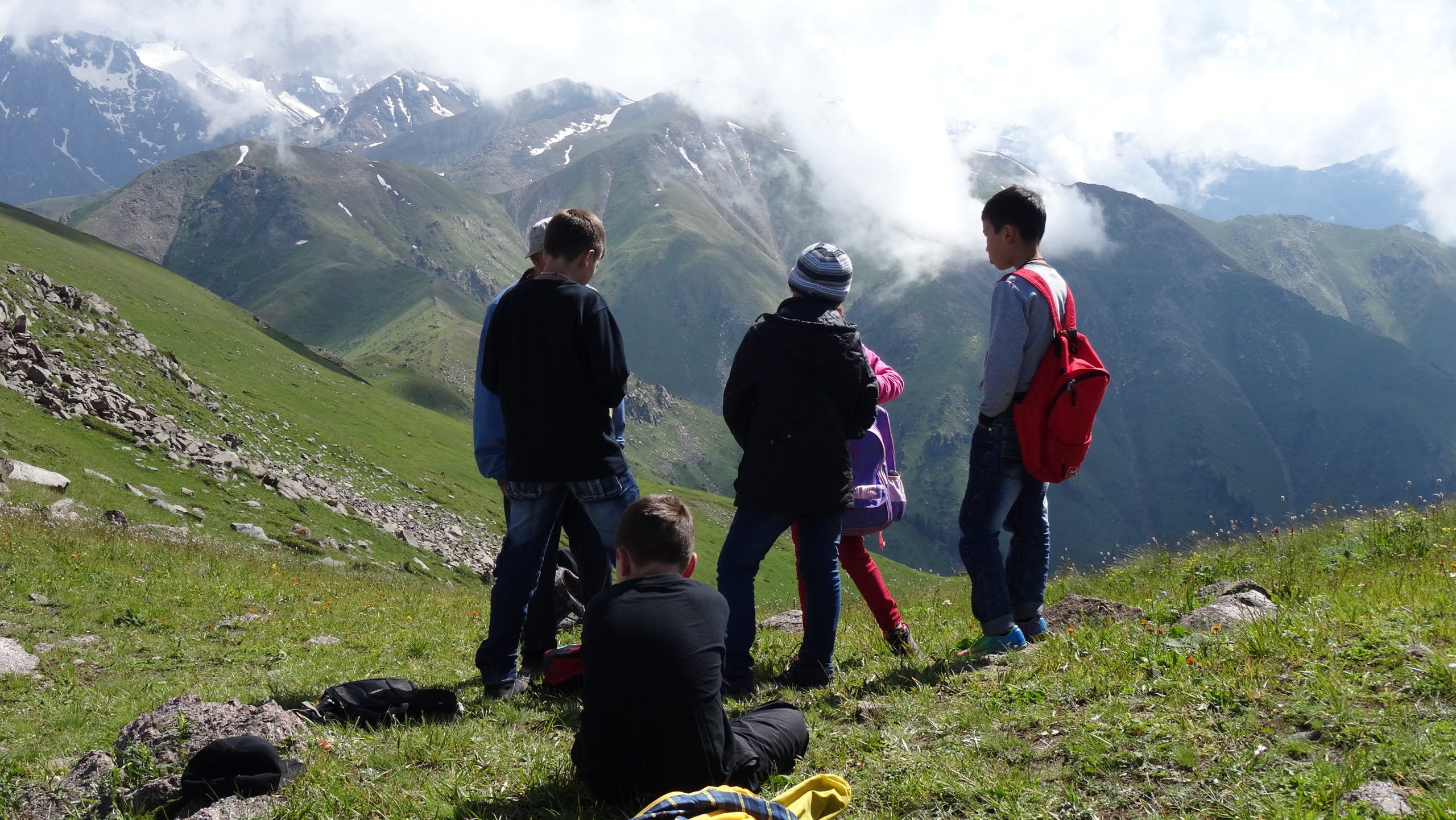2. Concept of the summer camp
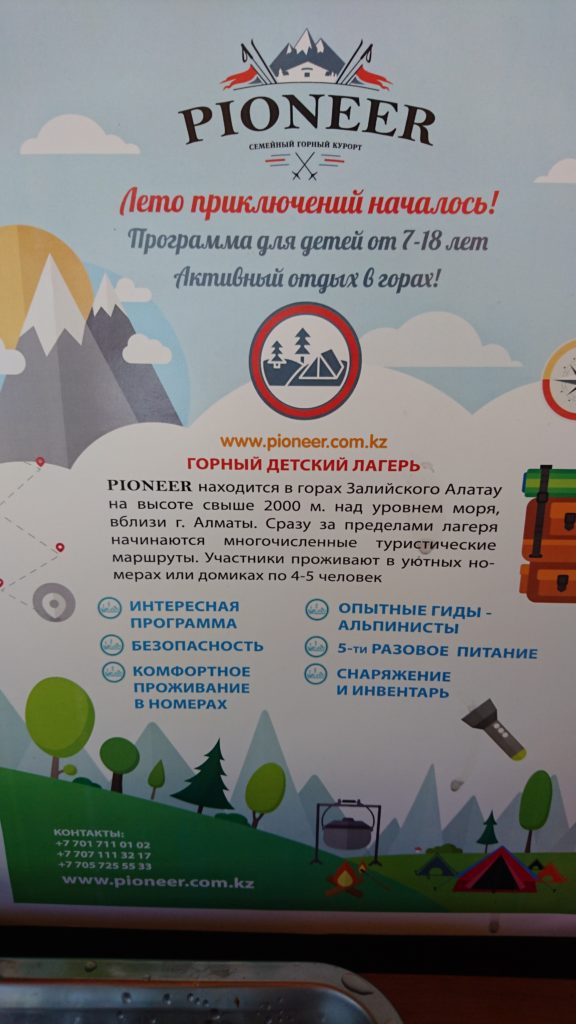 The “advertisement” for the summer camp (for children and adolescents aged 7-18 years)
The “advertisement” for the summer camp (for children and adolescents aged 7-18 years)
A 1 minute amateur video compilation made by the instructors (who were paid volunteers).
2.1. The natural approach
At the beginning, I didn’t really have a plan; I just relied on my good understanding of the deep nature of autism and on my personal life experience to deal with the situations as an autistic person.
We also used “natural common sense”, and of course we weren’t influenced by the usual “disease” approach, and this was certainly the most important point, the necessary mindset to have.
After a few days, the following things were clearer.
2.2. Awareness of the other children
For the first 10 days “season”, I did not explain anything to the group of about 20 children, regarding the presence of 2 “special children” (because I had just arrived, so I didn’t was not yet prepared).
There was no problem, thanks to the general atmosphere of “acceptance” (inclusiveness), but a “normal” boy told us, about an autistic child, that “he is crazy”.
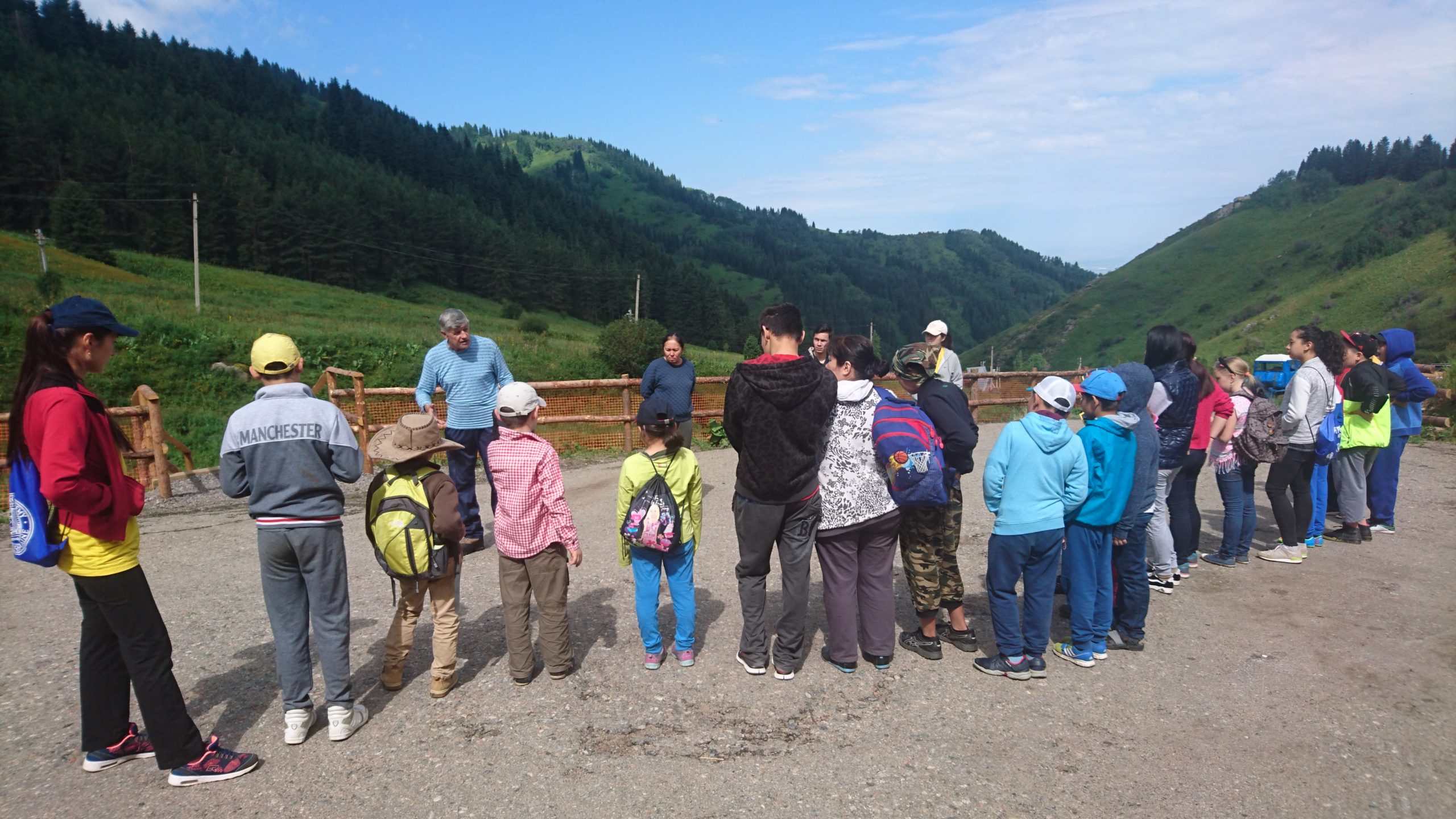
One of the meetings. Most of them were inside the building.
Here, a mountain guide explains how we will climb to the top of Mount Pioneer.
For the other seasons, we had a little meeting with the “normal” children, shortly after their arrival (every 11 days), and I told them the following things:
- There are “special children” among you; they are not crazy, they are not sick: they are just autistic, they are “different”;
- Please don’t make fun of them (I insisted on this); please be kind to them;
- They live “in their world”; they need to learn how to live within a group, they need to like it, so please don’t reject them;
(When I said these things, I could notice that some children were looking around, trying to see where these “special children” were, and I had a feeling that they were kindly willing to help them.) - Be with them as you are with any other child, so if they don’t feel like you are “putting up barriers” they will interact with you more easily;
- If there is any question or problem, don’t worry, immediately ask the instructors, the manager or myself.
(Of course, this was all translated into Russian.)
I think that this very simple information makes all the difference, and is one of the most important component of the “recipe” of the success that we could notice in this summer-camp.
Not only there were no kids coming to complain, and very few questions, but they simply lived their “children life” naturally, without thinking too much about stories of “normal kids” and “special kids”.
The main point is that, given that they were aware and warned about the possible “special behaviours” of some kids (which obviously occurred), then they were not surprised, they did not have to wonder “what is going on ?”, and to be afraid, or to react in a negative manner (like rejection).
Indeed, such situations were presented as “already managed” by someone else, a sort of “authority” (the staff), so, why would they have to bother ?
They were not “left alone facing the unknown”: autism was taken into account at that summer-camp, and it makes a HUGE difference with places or situations where autism is “non-managed” and, therefore, immediately looks like a problem.
Hence, given that the kids were clearly told that we were well aware about these special children and about autism (and that there was even a special “autistic counsellor” for that), they did not have to be scared ; they could see that we were handling the difficulties as “business as usual”, so in conclusion all was fine for them.
So the result is that the special kids were feeling much more at ease in the group, not rejected, not looked at as “weird”, unlike usually. The autistics are very sensitive and can often feel the “bad thoughts” about them, which of course prevents them from attempting to socialize.
If the special kids had been placed in “non-inclusive” groups (about autism), there would have been problems very quickly, the “normal kids” would have put some distances and barriers, and the special ones would have remained completely “in their world”, as usual.
Instead of that, we could see that the autistic children were “opening” little by little, with more interactions, more interest, more “presence” in their eyes.
And if the special kids have been placed in “special centers” or “special summer camps for disabled”, they would not have experienced a “normal life with normal people” in the camp.
Maybe the staff would have taught them some things, but it is much more efficient to learn things naturally. Especially given that the autistics have problems with abstraction, and they understand much better with concrete examples.
It is impossible to “learn the social codes” (through practice) when you are surrounded only by special children who do not know these codes.
And also, when a kid is in those “special places”, he can feel that he is not accepted in the “normal places”, and this is a problem, especially for his self-esteem and for the attempts to have him appreciating the “normal groups” (given that they don’t like him).
2.3. Treating the “special children” like “normal children” (as much as possible)
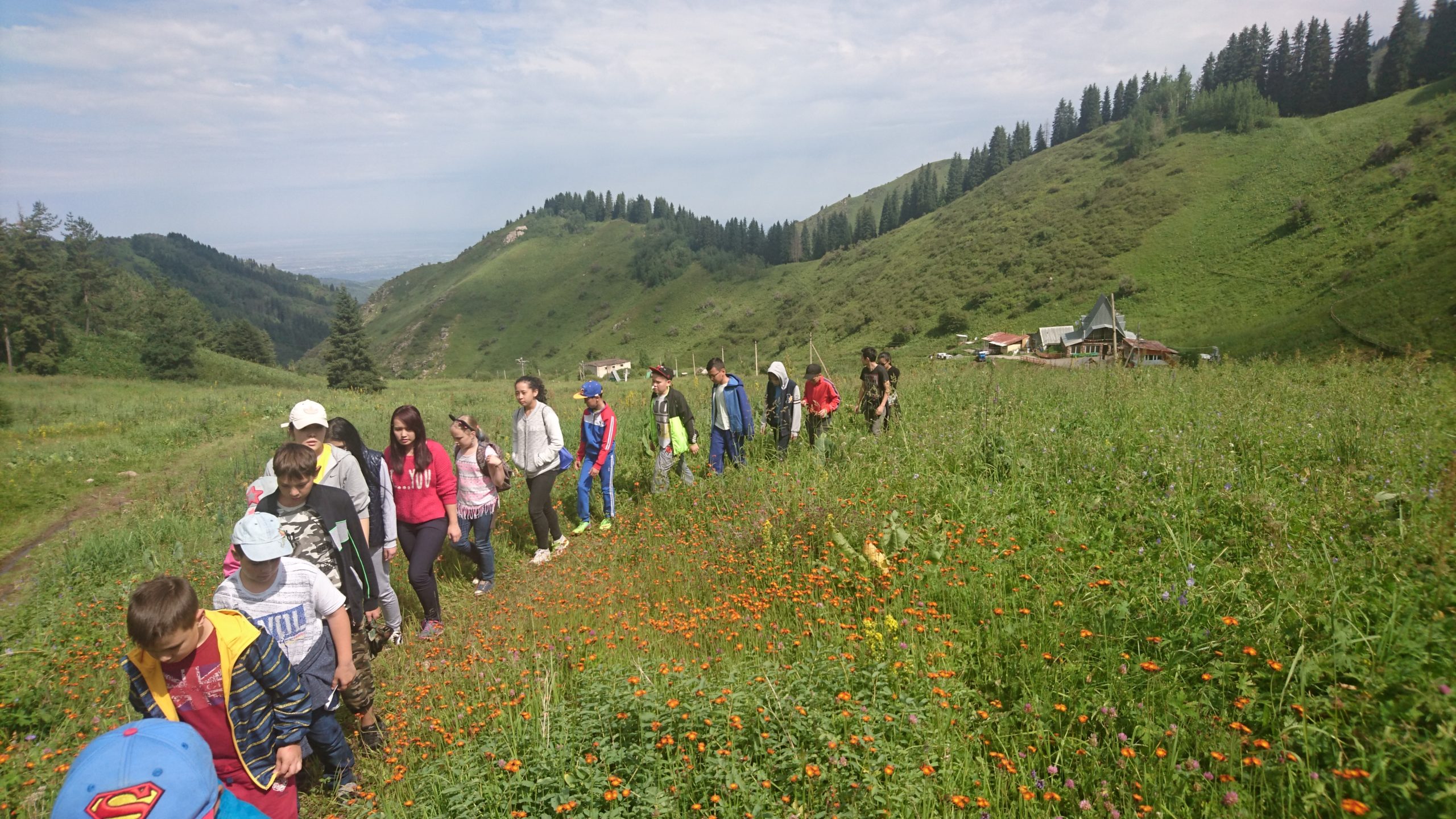 On this picture, there are several autistic children, and it is impossible to guess who they are.
On this picture, there are several autistic children, and it is impossible to guess who they are.
(You can see the Pioneer Mountain Resort at right.)
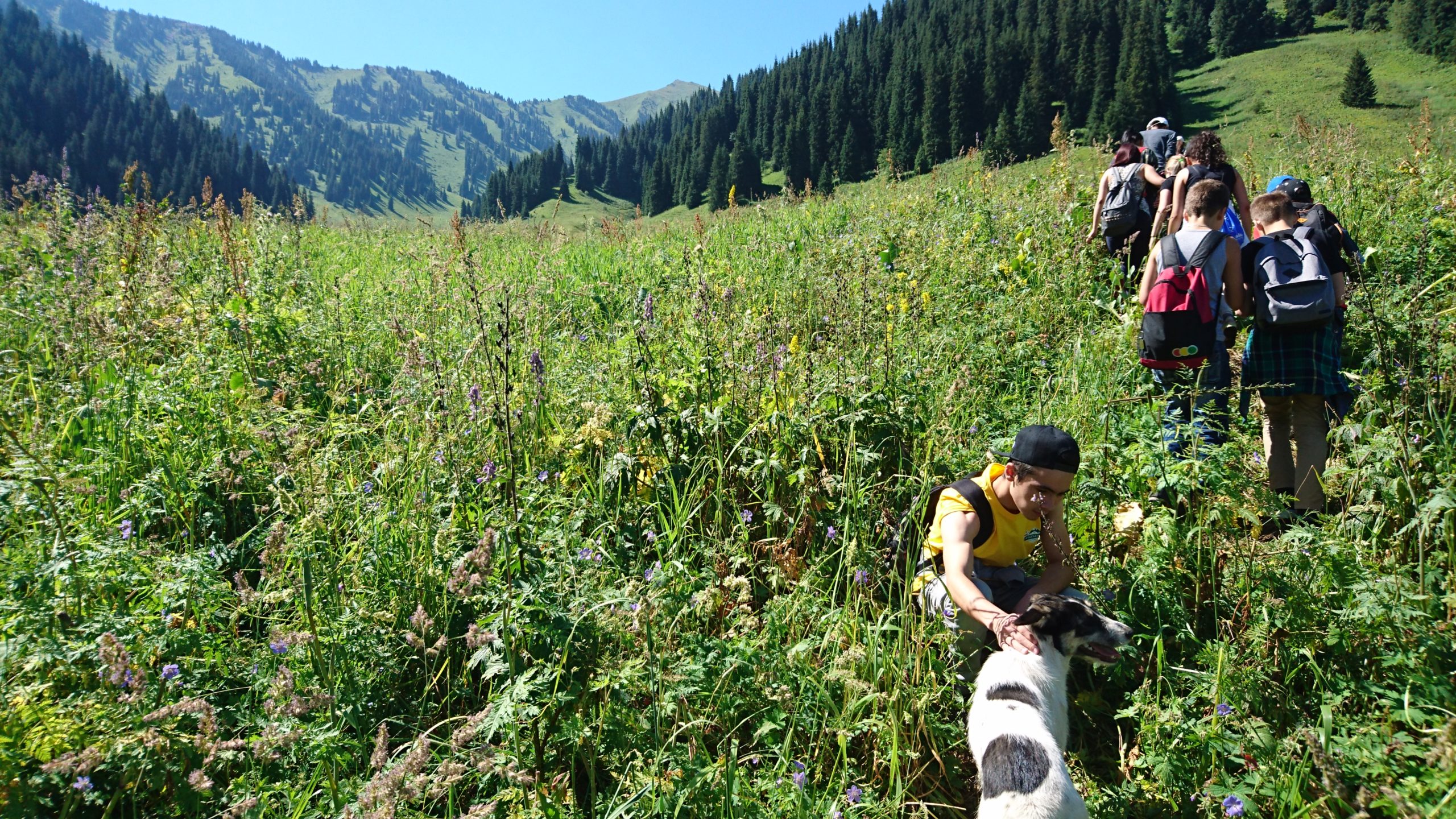
We tried as much as possible to have the autistics participating in all the numerous activities, showing them that we considered that they can do it, and that “they are essentially like the others kids”.
Instead of thinking that “they cannot do it”.
It is not that “they cannot do it”, but that it is much more difficult for them, it takes more time and efforts. But not impossible. And also we have to teach them in a few days what the others learnt for years, so of course it is difficult.
Instead of thinking “he cannot sit straight” or “he cannot bring the tea, it will fall, etc.”, we TRIED to have them do it, and after some efforts, we could see that in fact they can do the things. But they don’t learn at the “normal” speed or with the “normal manners” : maybe that is why, usually, the “normal” educators are concluding to those “inabilities”…
In fact, it seems more like an “inability to teach specially for the special children”, than a so-called “inability” or “disability” which would be inherent to autistics, and make the autistics “inferior”.
We offered them to do almost all the “normal” social / group things, without thinking too much about “he can / he cannot”, and we could see that, when “caught in the general group dynamics”, in fact the autistics were slowly and naturally copying and learning and starting to do like the others. More or less slowly, but I could see progresses everyday.
Obviously, if you decide that “they cannot” and that they are sick and that they should be separated from the natural environment where they can learn, it cannot work, for sure.
When there were “troubles”, we addressed them as “difficulties” or “special needs”, and not as “problems” or “defects” or “disabilities”.
We were also careful about respecting their autism and their need to “withdraw” sometimes (instead of forcing them to always be or look “normal”).
They had the freedom to be different, to be themselves, and not to play a role in order to be accepted.
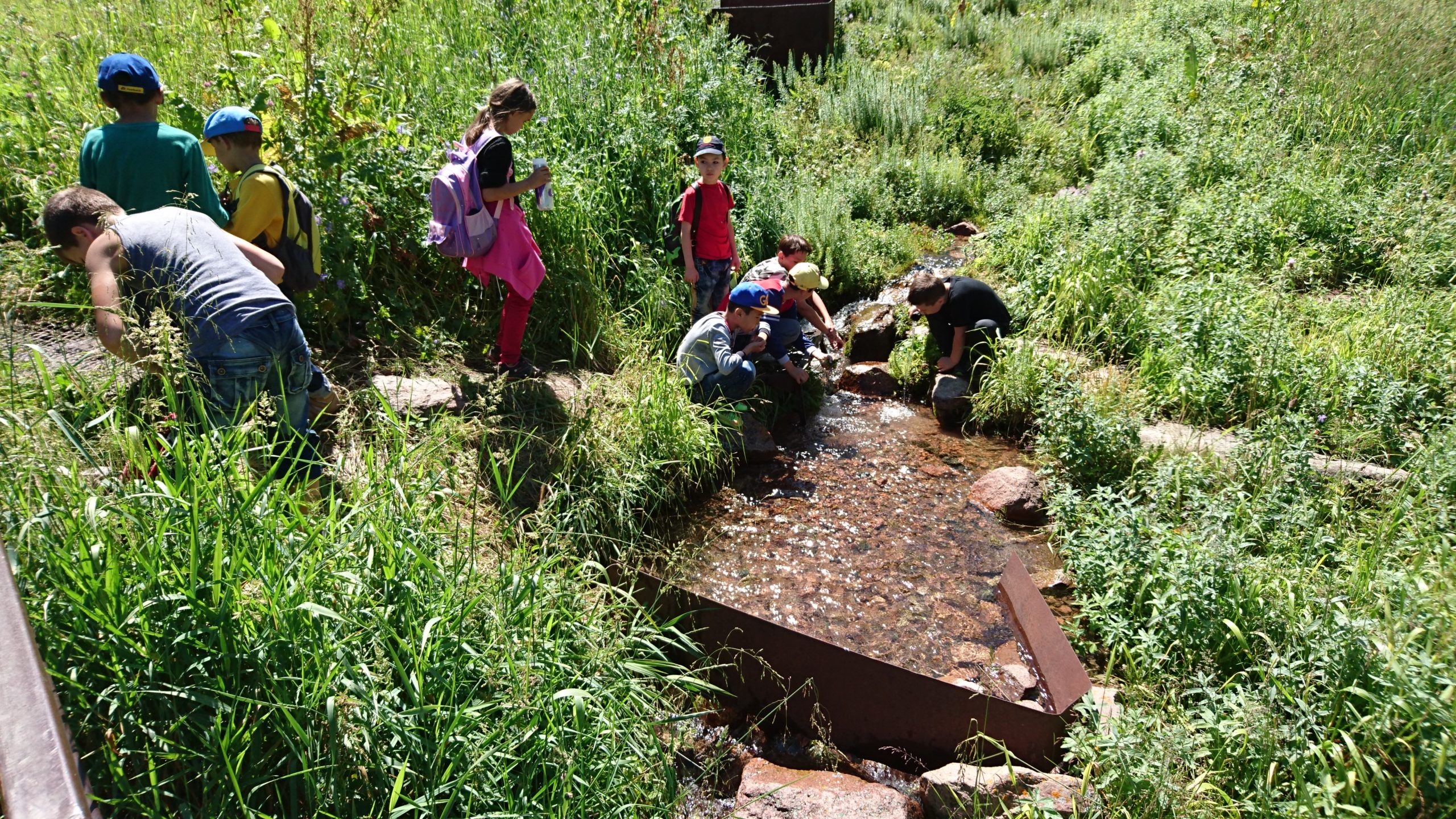
At the end of an unplanned visit, after having managed to open the mysterious “little house in the mountain“.
You may enlarge the video clips with the button at the right bottom corner of these little video players.
It is important to “force kindly”, but not too much.
To find the right balance.
“Treating totally normally” without autism awareness and accommodations would lead to disasters, and that is why usually the autistics are rejected from the “normal places” schools etc.
“Treating totally specially” cannot help them to behave normally (I write *to behave* normally, and not *become* normal).
It is important to accept and respect our differences and not to force us to be “normal” as a condition for accepting us.
It is also important to help us to behave with manners more acceptable by the group.
It is a matter of reciprocal, fair adaptation, which should be done as much as possible in every day life.
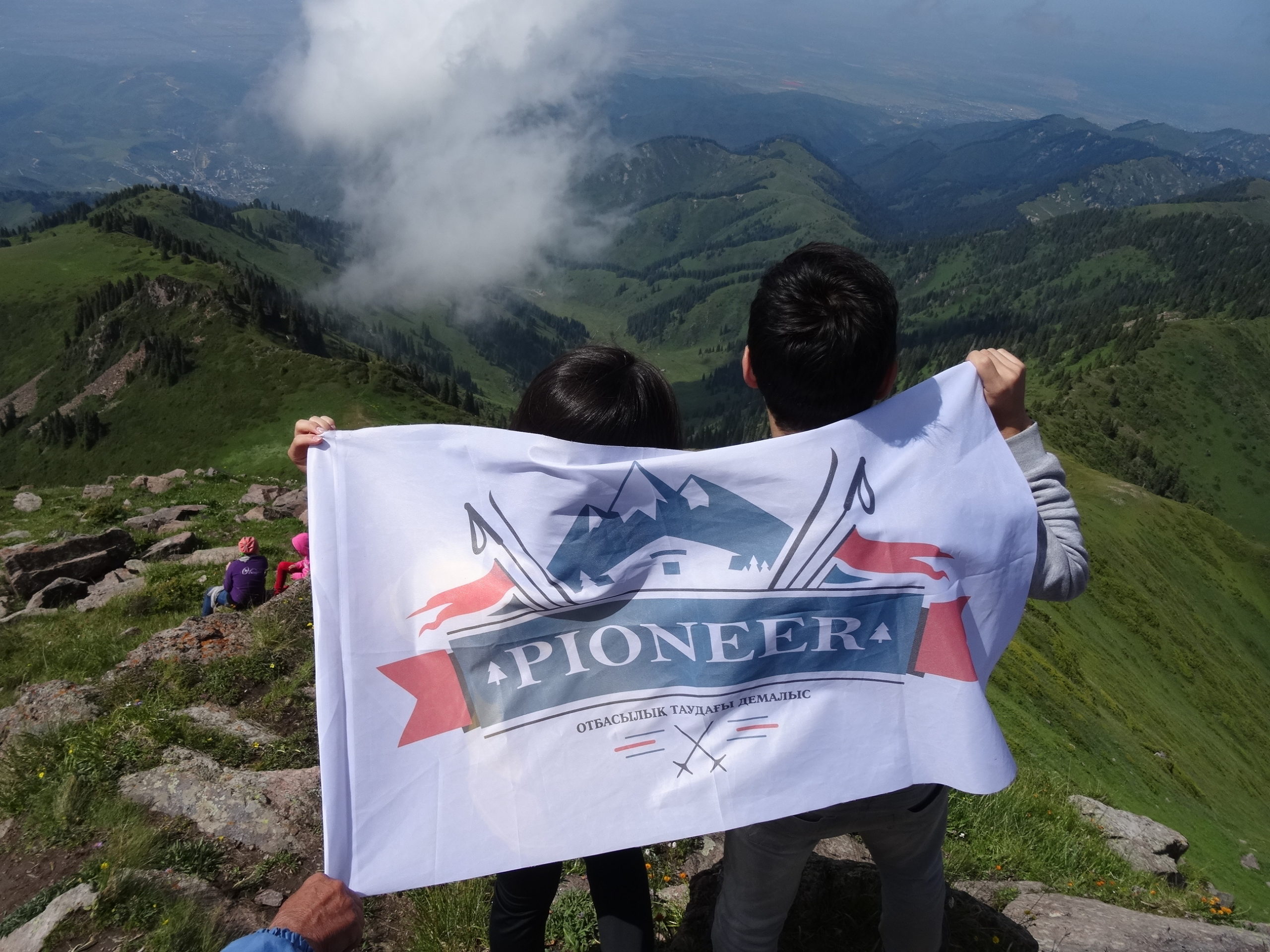
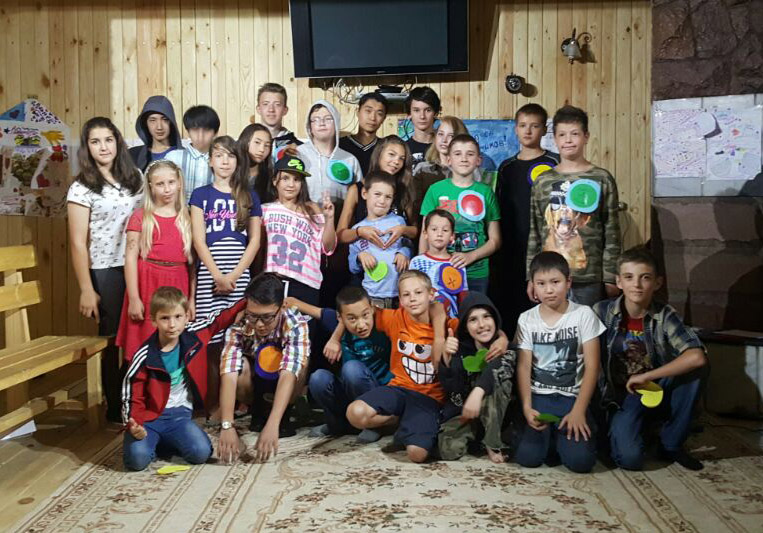
In this picture we see two autistic children: Tima at the centre, with Arthur right behind him.
The autistic children were not “excluded from the community” as usual (which often comes from a kind of “fear of not knowing what to do with them”).
As I explained in this article, it was sufficient to warn the other children, as soon as they arrived, of the presence of some “special” children, and to tell them that they were not “crazy” and that there was nothing to worry about because we were handling it completely (and they could see that there was even a foreigner (me) especially for this).
The children also saw that the monitors were very caring with these special children, as if they were “fragile”, so the very idea of rejecting them could not occur to them.
And therefore they did as we adults did, i.e. by “accepting” with kindness and attention, naturally, without forcing themselves.
And given that the “different” children were (finally) treated well and accepted (respecting their differences), they felt good and they almost never had a “crisis” (or maybe only 1 minute per stay on average per “special” child, which is nothing).
Thus it is a virtuous circle, and thus it is “natural” inclusion, not just “on paper”.
This is very different from the usual approaches, which unfortunately are based on the idea that the autistic child is “defective” rather than “different”, and in which, therefore, the rare attempts of inclusion are difficult because they are “artificial”, they are not really sincere.
In summary, one of the keys to success is a good understanding of autism (or if not understanding, at least respect).
Poor understanding leads to rejection and exclusion, and therefore difficulties, crises etc., it is a vicious circle.
2.4. Awareness of the staff
Of course it is necessary that everyone in the staff (including the cooks or other employees) is aware about the presence of the special kids, and has some basic notions about what to do and not to do.
At least, they should not look at the autistics as if they were “weird kids” because this could stress them and “put bad vibes in the alchemy”.
The most important is to make a little “training” of the instructors (the young volunteers), to explain them some things about autistics, and to discuss about each individual autistic case.
When they had questions, when sometimes it was difficult to analyse the behaviour of an autistic kid, they came to ask me. Many times I could find the explanations and how to address the situation, how to solve problems or how to do to avoid to repeat them. Sometimes I could not find the explanations to some behaviours, but they were only “unusual behaviours” and not really “problems”.
2.5. Importance of the advices of an experienced autistic person
During almost all the day, I was working with my computer (mostly about the Autistan concept, the Flag, websites…) in the restaurant room, and I did not spend so much time in “advising”, maybe one hour per day on average, but the little that I did was very useful, because I could understand rather deeply (almost always) the behaviours and difficulties of these autistic kids, by making comparisons and links with my own autistic life, and with what I see as the essence of autism.
Being autistic (even mildly), I know the importance of “little details” which look completely unimportant for the non-autistics (who don’t even see them), but not for us.
It is of course very important and useful to have the explanations and advices of an autistic to understand the autistics.
For instance, I explained that it is very important to respect the special interests of the autistics, their own “inner world”, their right to be alone, to “withdraw” when they need. But that it is necessary to find a correct “balance” or “trade-off” : they should not be all the time “in their world”, otherwise, they would not benefit from the camp.
And I also found a way to know what is a “good special interest”, and a “bad special interest” : it is very simple ; I think that when the child is into a creative, building or learning process, it is good ; and when it is only “consumption” (watching TV, laziness…), it is bad. This way we know that if an autistic kid is obsessed by some cartoons, we should not just say “let’s respect his special interest”.
But sometimes it’s not so easy : if he is obsessed by movies about trains or insects, no one knows if it is not good for his future (for his job etc.).
2.6. Importance of a successful parent’s experience
This concept works well also because the owner and director, Zhanat, is the mother of an autistic child, and she managed to give him the right education : he was non verbal but he can speak a lot now, he recently entered the College of Fine Arts. And also this family respected his “special interests” (called “narrow interests” by medicine) so he could develop them, and he does now wonderful creations with modeling-clay.
So she has the “know-how” ; sometimes she corrected or improved my ideas, given that she has a parent’s experience that I do not have.
In this TEDx talk, Zhanat explains a lot about the challenges with her autistic son Alibek, and how she managed to overcome them ( in particular thanks to activities).
And she knows how indispensable “inclusiveness” is, since this is the key of success for her son.
And it is also the key in my case, and, in fact, for all the other cases of “successful integration” that I know. Indeed, I have never heard about an autistic having learnt (successfully) in a special center or in a hospital how to “be integrated in the normal society” and to “behave adequately”.
Granted, there are some cases (some children) who are more “difficult” and who need, at the beginning, some special education without which they could not be able to come even in inclusive summer camps (or other inclusive concepts), but this is only about learning some basics, when necessary, and this is not enough.
Everyone has the right to a free life, without being forced to go only to a few pre-designated places, which are “artificial” and far from the “enjoyable life”. All this is unfair and counter-productive.
The biggest problem is not our so-called “disability”, but the lack of understanding and acceptance by the mainstream society, due to fear and ignorance.
2021 update
Recently, Zhanat carried out a scientific study which shows the benefits of these stays at altitude on the immune system and the health of these children, which helps to make them more relaxed and more sociable.
Abstract: The cross-over effect of the influence of the hypoxic environment and physical activity, designated as “cross-adaptation”, on the health promotion of children with autism spectrum disorders (ASD) was investigated. A model has been developed for correcting the health of children with ASD on the basis of systematic seasonal 10-day physical training courses in a natural moderately hypoxic environment. Systematic health improvement courses with the use of special physical exercises in conditions of natural mountain hypoxia develop cellular and humoral mechanisms of immune responses, increase immunity, improve the physical and psycho-emotional state of children. Among 50 young and adolescent children diagnosed with ASD, after 4 10-day health improvement courses during the year, 20% of young children and 80% of adolescents showed an increase in the activity of cellular and humoral immunity. The proposed model for correcting the health of children with ASD is a promising universal non-drug way to increase immunity, stimulate the processes of adaptation and socialization of children with ASD. In the opinion of parents, after health improvement courses, many children have a desire to communicate with both parents and other children.
2.7. Natural environment and altitude
At the top of Mount Pioneer, during a trek with the children of the summer camp.
(You may enlarge any video clip to “full size” with the button in the right bottom corner.)
No matter where you look, on 360°, even with binoculars, you won’t see any village, any road, any electricity pylon, nothing else but Nature. It is therefore perfect Harmony.
I felt it was a “natural and automatic good treatment of the mind”.
I noticed also that the natural mountain environment was very beneficial for all the kids, especially when trekking in the mountain. Myself I was feeling very well, the air was good (at an altitude of 2000 m in the camp), it was rarely too hot, I was very calm.
Given that the autistic mind is annoyed and “polluted” by the artificial things (which are not coherent, not harmonious, thus “anti-natural” thus “anti-autistic”), then the autistics are less disturbed and irritated in such natural places, and it seems to participate to the success.
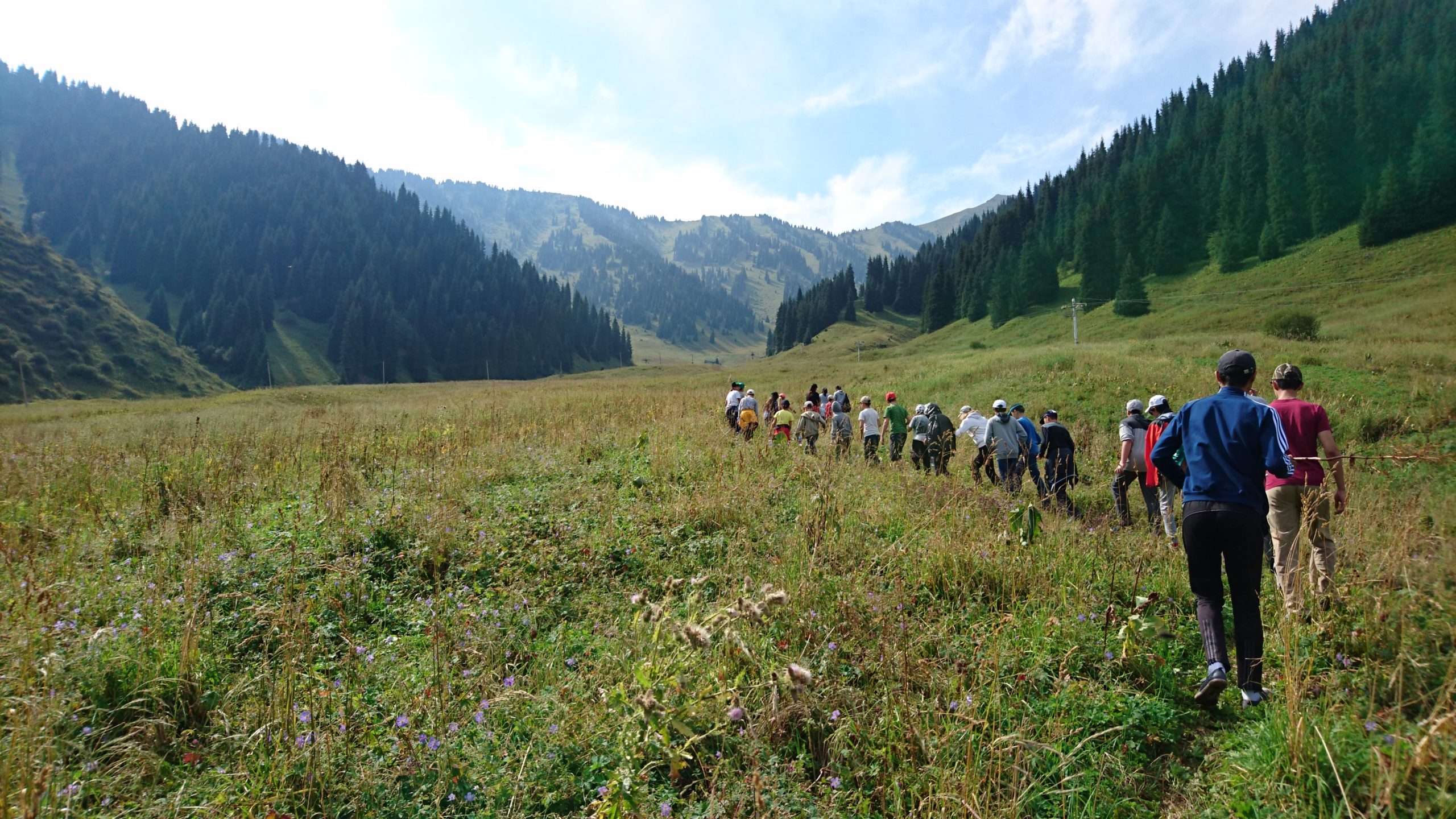
In fact, all that “successful slow integration” happened naturally, quite spontaneously, and easily.
I don’t know if it would be so easy in the city or in crowded places.
I also noticed that when the autistics were doing physical efforts, like long treks, they were less “in their world”, and more “present” (“with us”), which is easy to understand given that the body “asks” for more attention. The fact of experiencing the same physical difficulties as the others in the mountain, and the need to be autonomous and sometimes “brave” (for instance, to walk back to the camp when you are very tired) forces the kids to some kind of “solidarity feeling” and also to face the natural reality as it is really, and not as one thinks it is.
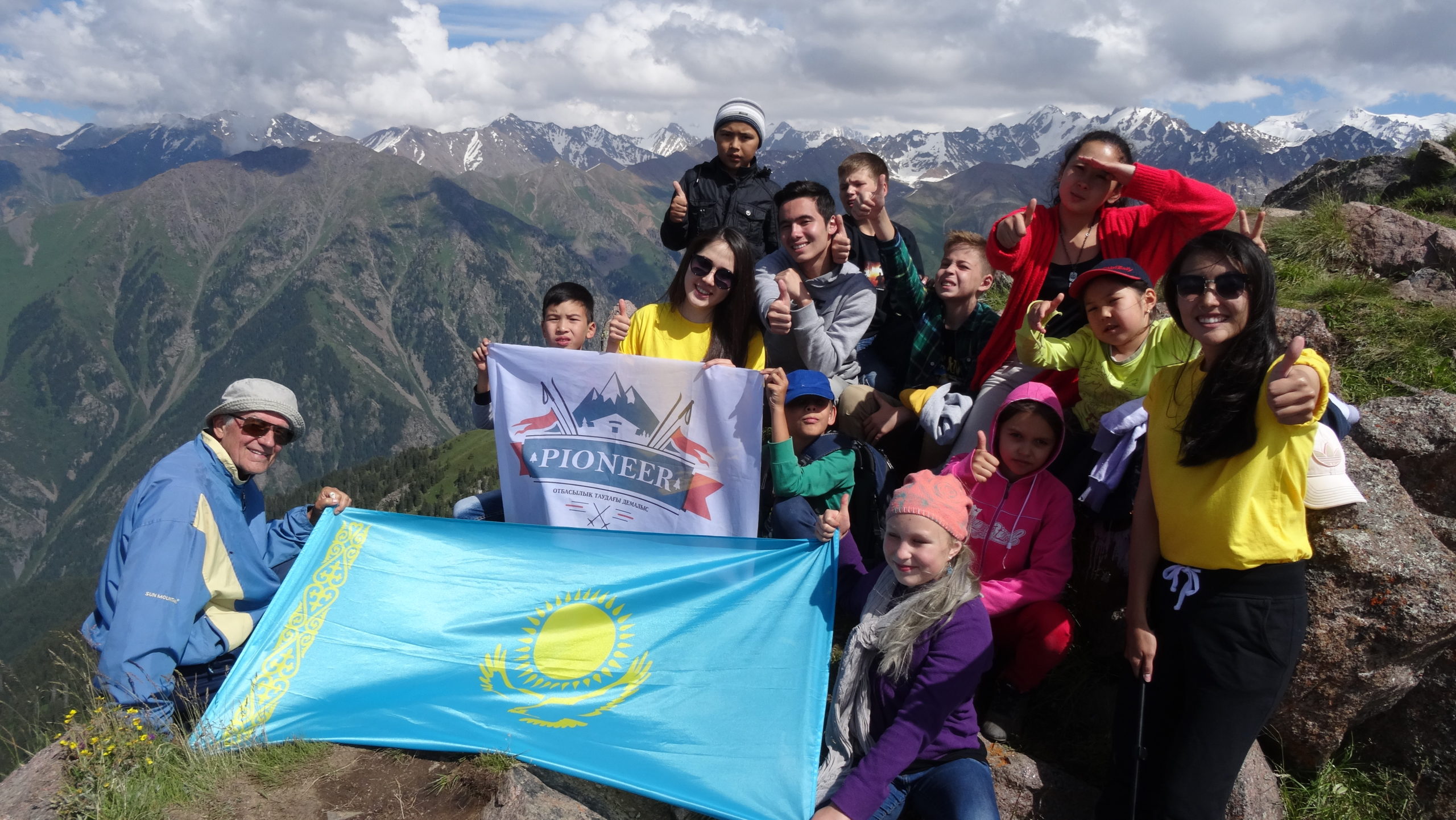
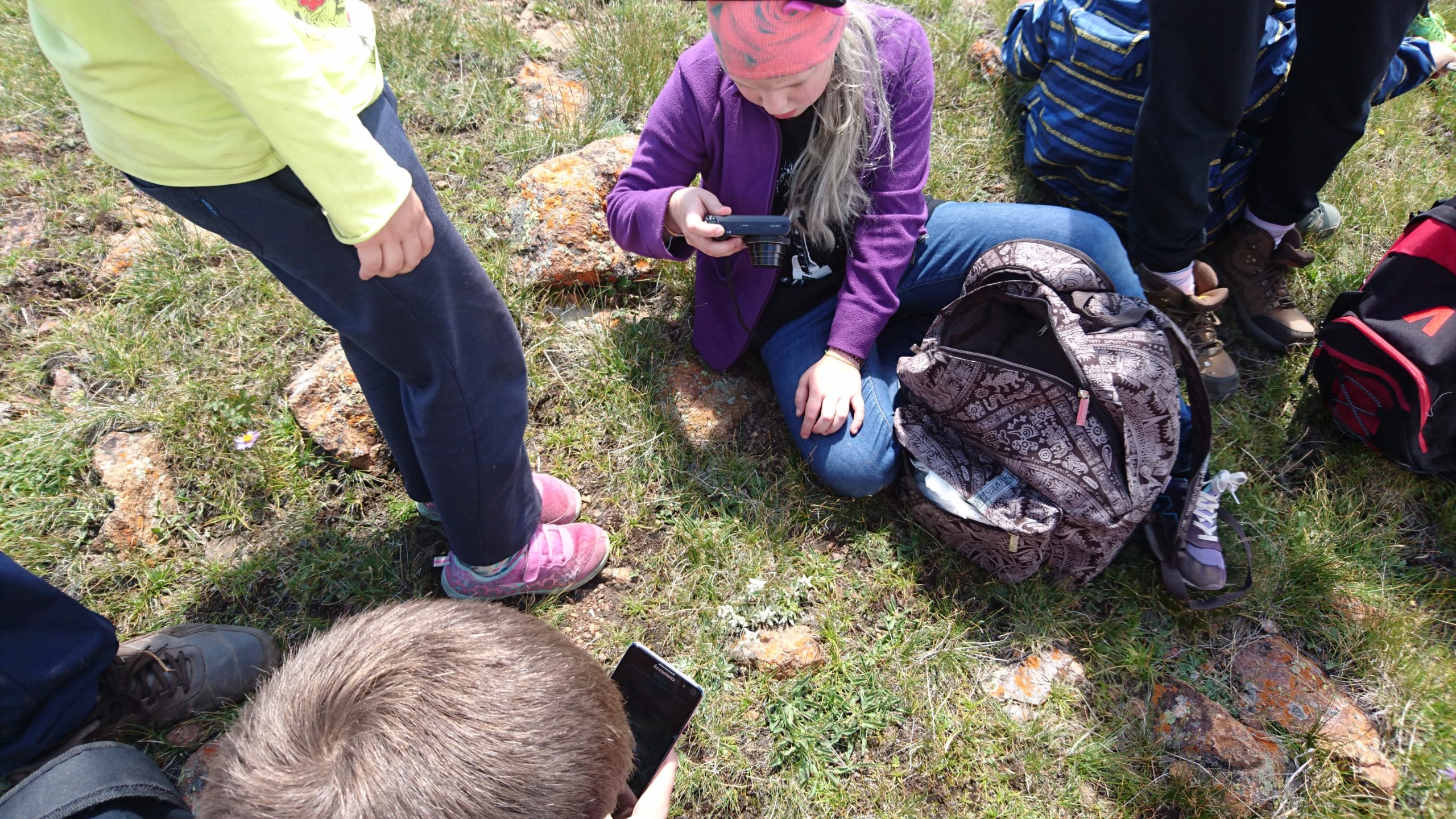 Here, during a hike up Mount Pioneer, the children found some edelweiss.
Here, during a hike up Mount Pioneer, the children found some edelweiss.
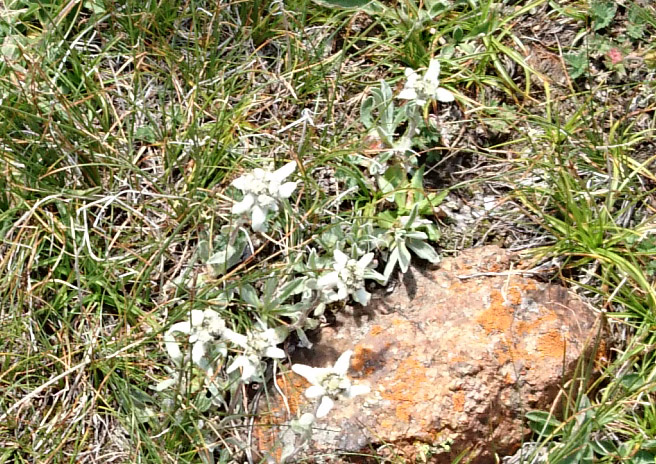
(close-up of that picture)
It was from this anecdote, and with the whole atmosphere being very “natural and coherent”, that I started to think about changing the old flag of Autistan.
Indeed, a young autistic friend of mine had told me that it was too “aggressive” (and his mother made a grimace when we talked about it), and he suggested “tropical flowers”.
And it’s true that the first flag was so ugly that I don’t even dare to show it here (there was a blue background, and a kind of star, and that’s how I made a connection with the edelweiss).
The intellectual journey between this edelweiss and the present form of the Flag of Autistan went through several stages and it lasted several weeks.
I did consultations with autistic people at a distance, it is out of the scope of the present article, but let me show you the first stage below, just after the edelweiss.
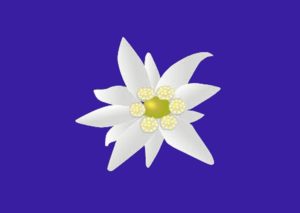
It was pretty, but not suitable for a flag, and it carried a meaning that was too restrictive.
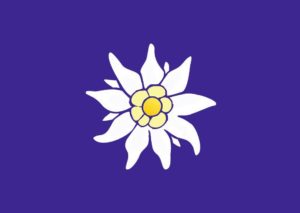

But at least it is true that the inspiration to make the new Flag of Autistan came from there, in the mountains of Kazakhstan, starting with the edelweiss.
Coherence…
2.8. Not “the unique special kid”
It was good also that there was always more than one autistic in each season, because usually these kids are the only autistics in their environment, so they may feel that they are “strange”, “weird”, like “errors”, etc. (and anyway, people tell them that).
But when they see other kids more or less like them, they can understand (or feel) that they are not “exceptions” or “problems”.
And also they may have friendly relations between autistics, which are very different from the relations with non-autistics. So they can experience two different kind of interactions. Not to mention the interactions with the young instructors (volunteers).
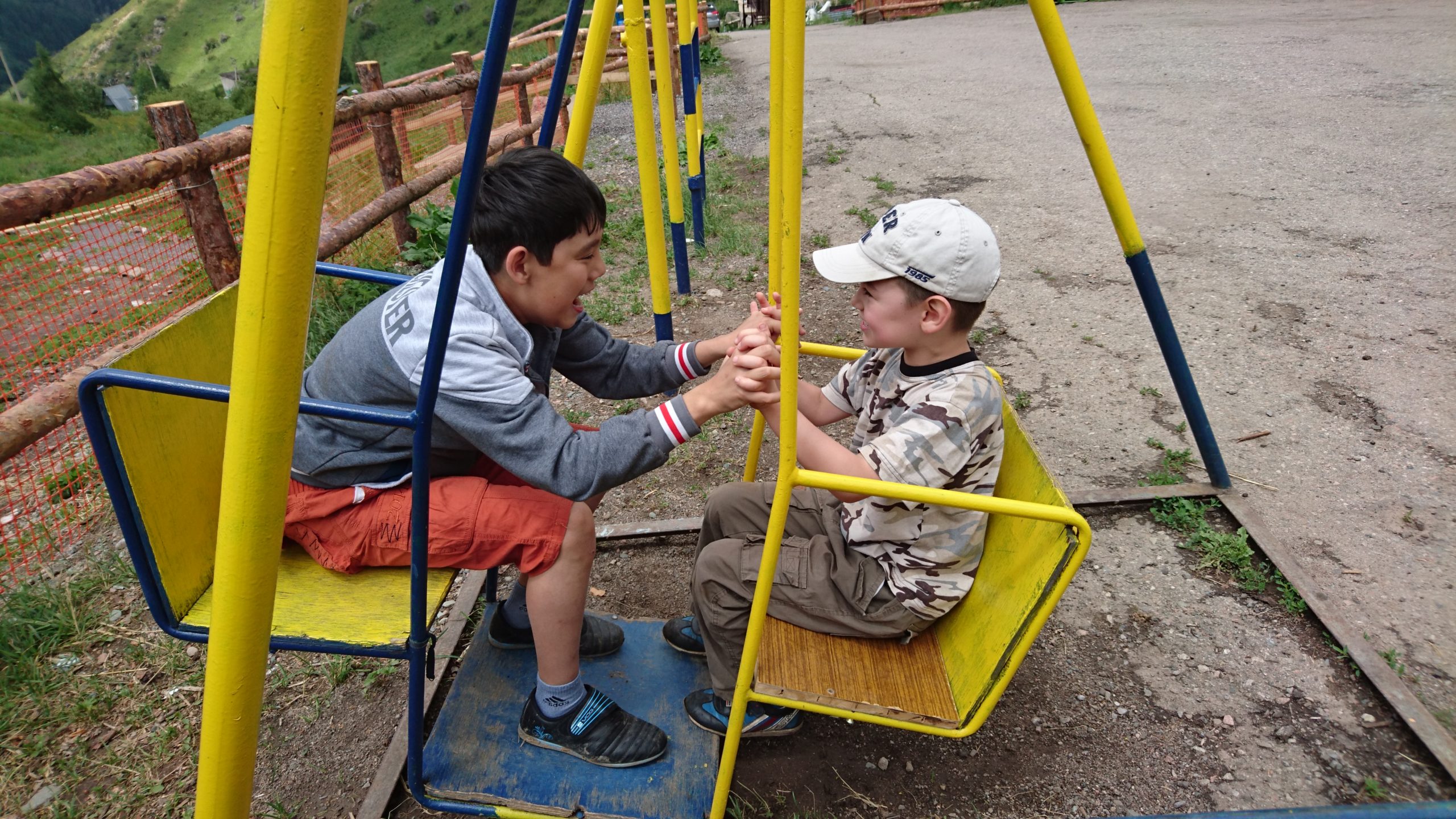
Arsen and Arthur (two autistic children) have fun together in their own way (which is not “normal”) and this is not a problem for anyone here.
Usually, they are probably rejected by the “normal” children, and of course this can’t make them want to “socialise” (which is paradoxically expected from them), and that is bad for their self-esteem and for having chances of a positive development.
2.9. “Clicks” (triggers)
I think that for most of these autistic kids this stay in the summer-camp was the first time they were accepted in a “normal group” ; it was easy to see that they enjoyed it and that it was very useful for their “adaptation”. At the end of the seasons, they were much more looking like the others.
There was like some kind of “magic”, like if the fact of treating them “naturally normally” did produce “naturally and spontaneously” the expected result.
But I believe that this “special reaction” (like a chemical reaction), which may be sometimes like a kind “shock therapy”, can work only when the children are totally removed from their usual environment, without the “old habits”, and without the family or anything that they know.
Like when you go on holidays abroad you can do many things that you would never do or even think in your “usual life”.
So we offered them the “experience / example of a different life, of a new life”, and we showed them that many things are possible.
But most of all, we showed this also to the parents (thanks to the photos and videos), showing them that it IS possible to change, but if they don’t change their habits and education (or lack of education…), then nothing will change for their kids. Or very very slowly.
